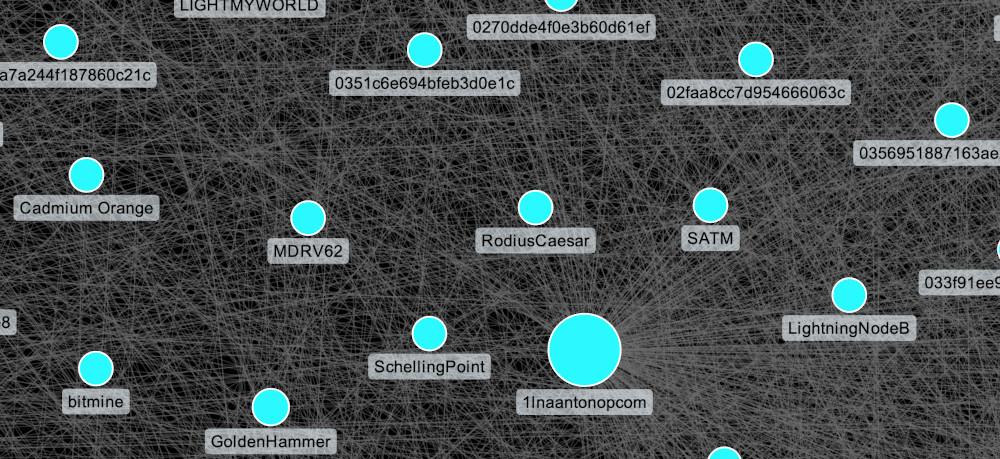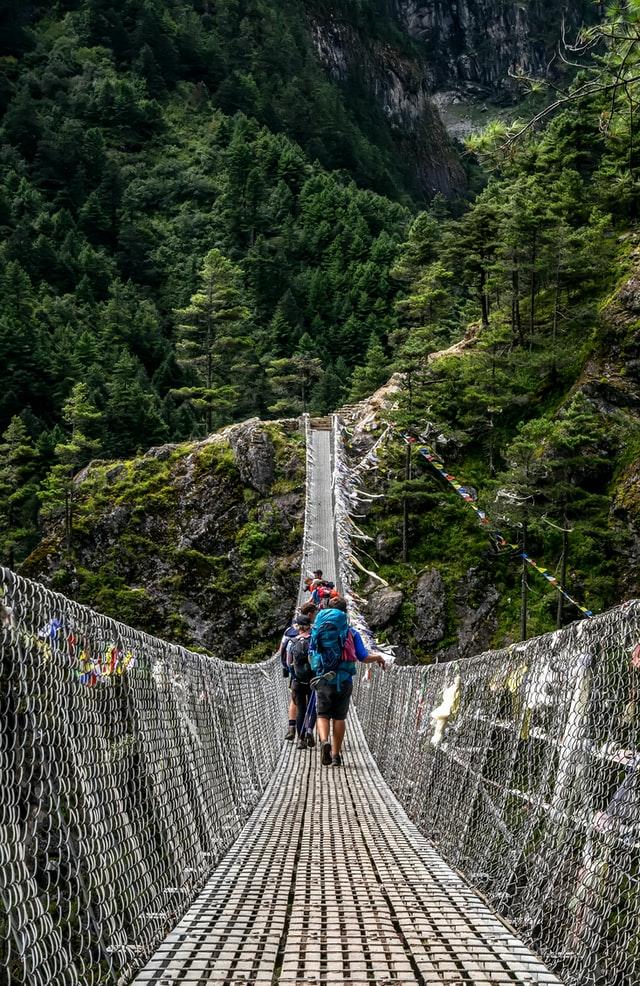
Severin Bühler | Connect the World
How to build a powerful node!
This week, in Episode 17, we talk with Sevi, founder of LnRouter.app! This is a great web tool that helps node operators make informed decisions! A real must-see!
LnRouter.app provides tools and custom metrics, for example: the Terminal Debugger, Node Routing Score, Channel Recommender (my personal favorite!), Liquidity Adjusted Hops and a Liquidity Ad Marketplace. The main goal is to optimize payment speed and deliverability and give users the ability to build a powerful node!

We also talk about the future of Lightning Nodes, the effect of the physical channel distance, node hardware, security and a lot more!
If you want to create a powerful node or just want to know more about the inner workings of a Lightning Node within the graph, then watch or listen to the full interview or start reading below! Enjoy!
Do you also want to know why Peter thinks every Bitcoiner should mine?
Watch or listen to the full interview or start reading below! Enjoy!

Lightning
How do you see the future of public Lightning nodes? Do you think it’s important that everyone owns their own node? Or maybe even web based as some kind of service in the cloud?
- I actually don’t know.
- We will probably see a lot of custodial solutions first and then slowly move to more non-custodial.
- Hardware -> Cloud, Key management -> Mobilephone?
Running a fast and secure Lightning Node sounds great. But what is the safest way to run a Lightning node on Clearnet?
- Clearnet is a problem if you can’t trust your government or ISP.
- If you see this as problem, then use a proxy server that redirects all traffic via the cloud from/to your home node.
What do you see as the most important feature for the Lightning Network that is currently missing?
I would really love to see a wide adoption of liquidity ads in the network. Liquidity management is still difficult and having a decentralized marketplace for dual-funded channels would bring the much-needed relief. In the long term, I believe we need to develop a system that takes response time for payments in to account. Even though response times are improving due to awareness, payments taking ~8s+ is bad. This is a research topic I am talking a lot with Rene Pickhardt. Let’s see if we can do something there.
What’s the biggest problem you encountered with your Lightning node?
hate stuck payments. PTLC for the win. I wanted to pay my ticket for the lightning conference and the payment of $100 dollar got stuck. It’s a frustrating experience because you don’t know if the payment arrived or it didn’t.
What do you think is the most promising implementation on Layer 2 on Bitcoin? (Acinq, Lnd , c-lightning or another one.
All implementations are usable and have their own unique features.
- I personally really like c-lightning.
- LDK looks very promising.
- I haven’t used Eclair a lot but it seems to work especially well with a lot of channels.
- Most people know LND. It is very well documented and easy to start out with.
The dual-funding protocol allows either channel peers to put funds into the channel funding transaction. It was introduced in c-lightning. Would you like to see this feature also added in other lightning implementations such as LND?
Absolutely. I believe dual-funded channels in combination with Liquidity Ads will solve a big problem in the network. Bootstrapping a new node will be easier.
Unfortunately, LND is pretty busy implementing other things like Rene Pickhardts probabilistic payment model so I am not sure how long they will take. I heard rumours that Eclair will implement it soon so there is hope 🙂
I saw someone mentioning on Twitter that his HTLC response improved 20 times by moving from a Raspberry Pi to a NUC. A progression from 1.9 seconds to 0.1 seconds! How important will the speed of the network be for more adoption to use the Lightning Network in general?
In my opinion very important. Do you want to wait 8s for every payment when you stand at the front of a big line in a grocery store? There are so many long-hanging fruits and as soon we implement response time in path-finding cost functions there will be pressure on routing nodes to actually improve that.
What advice would you give to listeners who really want to work hard on building a successful routing node? What is most important to know upfront if you start from scratch?
- Only do it with ~5BTC+
- Start small, get to know the tech
- Talk to people, Rings of Fire, Twitter
This is a job where you have to explore a lot. Technical understanding helps enormously. It’s not easy.
Support us in our mission
Do you like this article and our other content? Donate and support us in our mission to create a worldwide distributed Lightning Network by connecting countries around the world and bringing The Lightning News to you first!
Follow The Daily Moon also on Telegram and Twitter!
LNrouter.app

You came up with the LNRouter website, what was your original idea of this?
The original idea was to solve the pain I experienced above. Why did my payment not go through? What nodes are worth connecting too? From the outside, the 1ml.com node is an awesome node. 10BTC capacity, 2,077 channels, median fees are 1ppm. What do I need more? In reality, these nodes are not maintained at all and are therefore a bad peer. Being a good routing node requires keeping an eye on your channels and other metrics.
You collect a lot of data with your website about the lightning network. What is the most remarkable thing you discovered about nodes or the network?
The most remarkable thing in the network is the difference in response time. The average payment in the lightning network takes around 8s. If you look at the HTLC response time (time to forward 1 payment from one to the next node), then you see nodes that can do that within 0.2s and nodes that take 4s+. 4s * 3channels * 3 probes = 36s. This is insane. Factors: TOR, slow hardware (raspberry pi), big channel.db, low physical channel distance.
Can you give us some numbers about the traffic to your website and about which specific tools are most used?
I had to look that up just for the show:
~ 1300 users a month
Most used:
- Lightning Graph
- Terminal Debugger
- Node Routing Score
- Channel Recommender (early)
- Liquidity Ad Marketplace
I believe people are mostly interested in the Routing Score as it directly shows how good a node is from a Service/Merchant point of view.
What’s the big difference between LnRouter and lnnodeinsight from smallworlnd?
– The main goal of LnRouter is to optimize payment speed and deliverability. It provides tools and custom metrics to do that so the user can build a powerful node. – lnodeinsight focuses more on heavy graph analysis. He provides tools that require heavy cpu power to improve the earnings of routing nodes. (That’s my perception). SmallWorlnd and me sometimes use similar techniques but our goals are different.
The channel recommender on lnrouter can improve the graph position of a node with high quality peers. How does it work and what data does it take into account?
The question is always: How do I create a powerful node?
– Graph problem: Maybe you are well connected with Plebnet nodes because you do liquidity rings but you lack connections with exchanges. – On the hand: There are well-connected nodes like 1ml or games that improve your graph connectedness heavily but can’t route payments. The Channel Recommender uses the LnRouter Routing Score (guarantees payment delivery) and a Graph Position Improvement algorithm and proposes nodes to connect to. This gives very powerful recommendations.
I love the option in the channel recommender to choose to support decentralization. What does this do? And are these smaller nodes also the furthest from your own?
Roosoft built the Igniter script that we use to rebalance our Rings of Fire. He is also building something new called Steer. The point is that he said that he wanted to be able to build Rings (connect to peers) that are in the opposite corners of the Lightning Graph. The decentralization option in LnRouter does remind me of this.
- “Support decentralization” basically punishes nodes with a lot of channels.
- Yes, this brings up smaller nodes that improve your graph position maximally.
- I don’t know Roosoft but that sounds like a great idea.
The channel recommender is brand new! What plans do you have for updates in the future? For example showing the Physical Channel Distance (Rene Pickhardt) to that node from your own
Physically channel distance is definitely an option but probably a bit too early. Network is barely dense enough yet.
- Graph optimization on fee graph
- Liquidity Adjusted graph
I got plenty more ideas but I need to test them out first. Also, I need time.
You made a decentralized marketplace to get inbound Liquidity at the best price? How does it work?
- Lists all nodes with liquidity ads
- Filters out nodes that are inactive, low capacity or low channel count
- Calculates the costs of liquidity depending on how many satoshi you want to lease.
- Displays the Routing Score for Pro Users so you can filter nodes that provide high payment speed.
Leasing funds is still an experimental feature. Do you think this will be used a lot more in the near future?
I hope and believe leasing funds will be the future. Looking at LnRouter I already can see what nodes have a good Routing Score and at the same time, lease funds out cheaply. It will exist next to proprietary services like Pool or LNBIG. You will have a wide range of choices of where to lease funds from. There will be a lot of work to do to make the experience for leasing decentralized as good as centralized leasing though.
And in what way can more work be done on making this even more user-friendly?
- More implementations need to add it.
- Implement leasing ability into node management tools like RTL.
- Give the users more powerful selection tools around choosing good leasing nodes.
Terminal score debugger is an attempt to reverse-engineer the Lightning Labs Terminal Web Score. It gives insights on how a node is ranked and how to improve a node’s ranking. What’s the idea behind this tool?
- The ranking was/is opaque and nobody know how to improve the ranking.
- I partially reverse-engineered the ranking with the help from some node operators
- They use heuristics like uptime, channel disable ratio and probing to determine the score.
Funnily, this was a weekend project that got very popular
The Zero Base Fee graph on lnrouter shows a visualizartion of all nodes with their channels that support #zeroBaseFee aka Pickhardt Payments. A lot of node operators believe in setting the base fee to zero. What is your take on this?
- Right now, setting #zeroBaseFee is just signalling support to eventually get rid of the baseFee. No implications otherwise.
- In the future, nodes without zeroBaseFee will miss out on payments.
- Oliver Gugger is currently looking into implementing it in LND.
- #zeroBaseFee doesn’t make you more suspect able to DDOS.
To determine the routing nodes score LNRouter checks different metrics. Can you elaborate on this subject to why this is so important and what metrics help the most?
- Balanced channels as a proxy for no routing-failure.
- HTLC response time as a metric on how fast a node reacts.
- Centrality as a metric on how many hops it takes to reach your destination via the routing node.
Together you can model the payment speed/delivery success of a node relatively accurately. This is the LnRouter Routing Score. If you are a service looking for a good Routing partner, selecting nodes with a high Routing Score is a must IMO.
On your site you conclude with: Only open channels to nodes with a LnRouter Routing Score of 75+. The Routing Score models payment speed directly. Do you think there are also some other limitations like hardware, ISP or ToR vs Clearnet that can cause problems?
- TOR -> Slow response time (great privacy for end users, not for big Routing nodes)
- Raspberry PI slow hardware (good for starter though)
- Big LND channel.db -> very slow response time
- Avoid High Internet Latency (isp)
Can you explain the function of the Liquidity Report? For example what kind of nodes do you scan?
The liquidity scan/report is created every month once.
- Scans nodes with >15 * 2.5Msat channels that are active.
- The scan measures the amount of balanced channels and HTLC response time.
This is how nodes are judged.
Why do you run them only once per month?
- Things usually don’t change that quickly
- LnRouter tries to minimize the amount of test payments that are done on the network.
you tweeted about a new metric on LnRouter named “Liquidity Adjusted Hops”. Can you explain the difference to “Simple Hops”?
- Average hops to every other node in the network.
- Simple hops -> Calculated on the Lightning graph
- Liquidity Adjusted Hops -> Takes the “Balanced channels %” into account and therefore calculates the centrality more realistically. Approx though.
Do you have plans on implementing LnRouter in the Umbrel app store or other software?
I haven’t though about it. Possible.





Laptopman


LNcapital, node management for professionals | Henrik Skogstrøm






